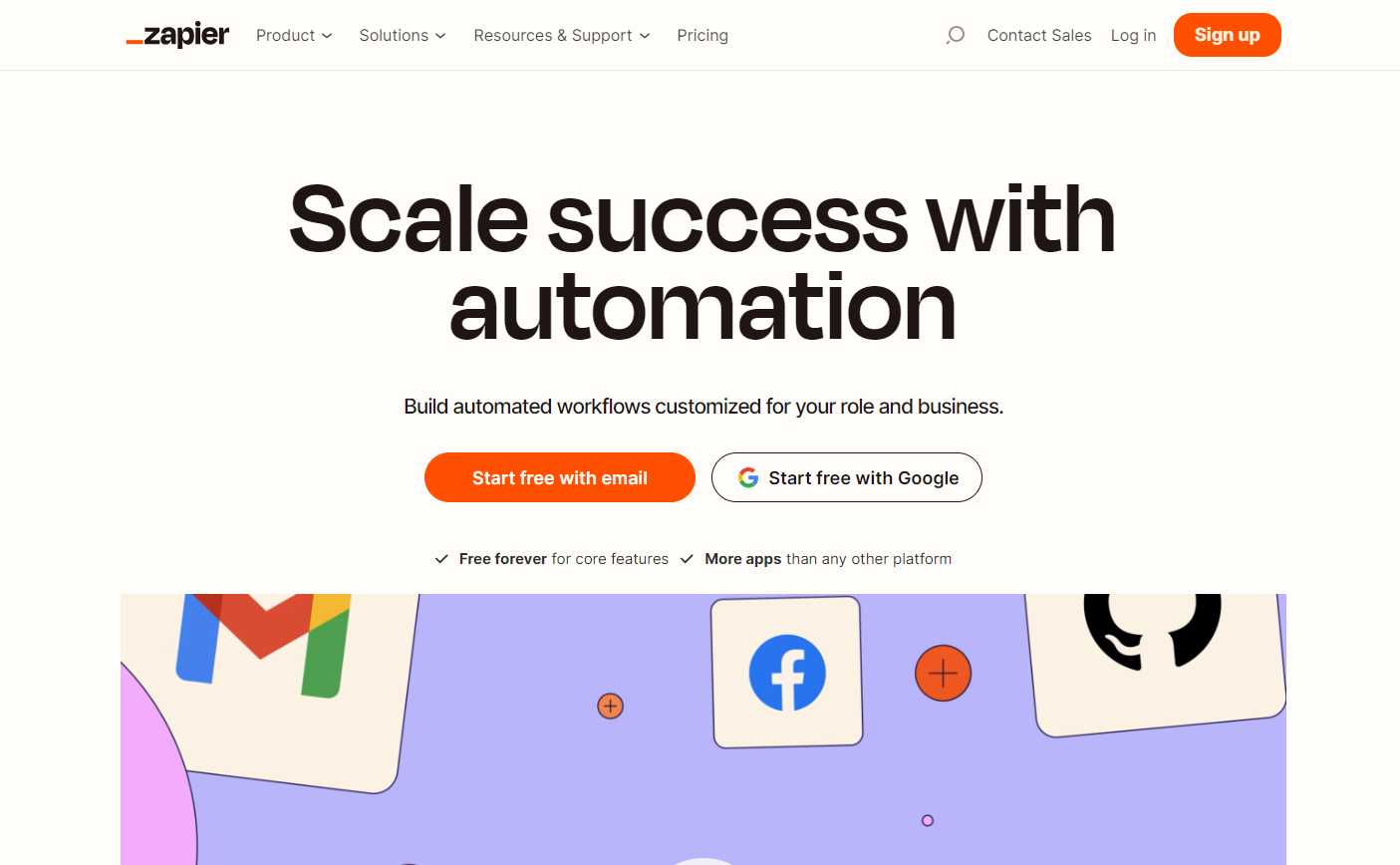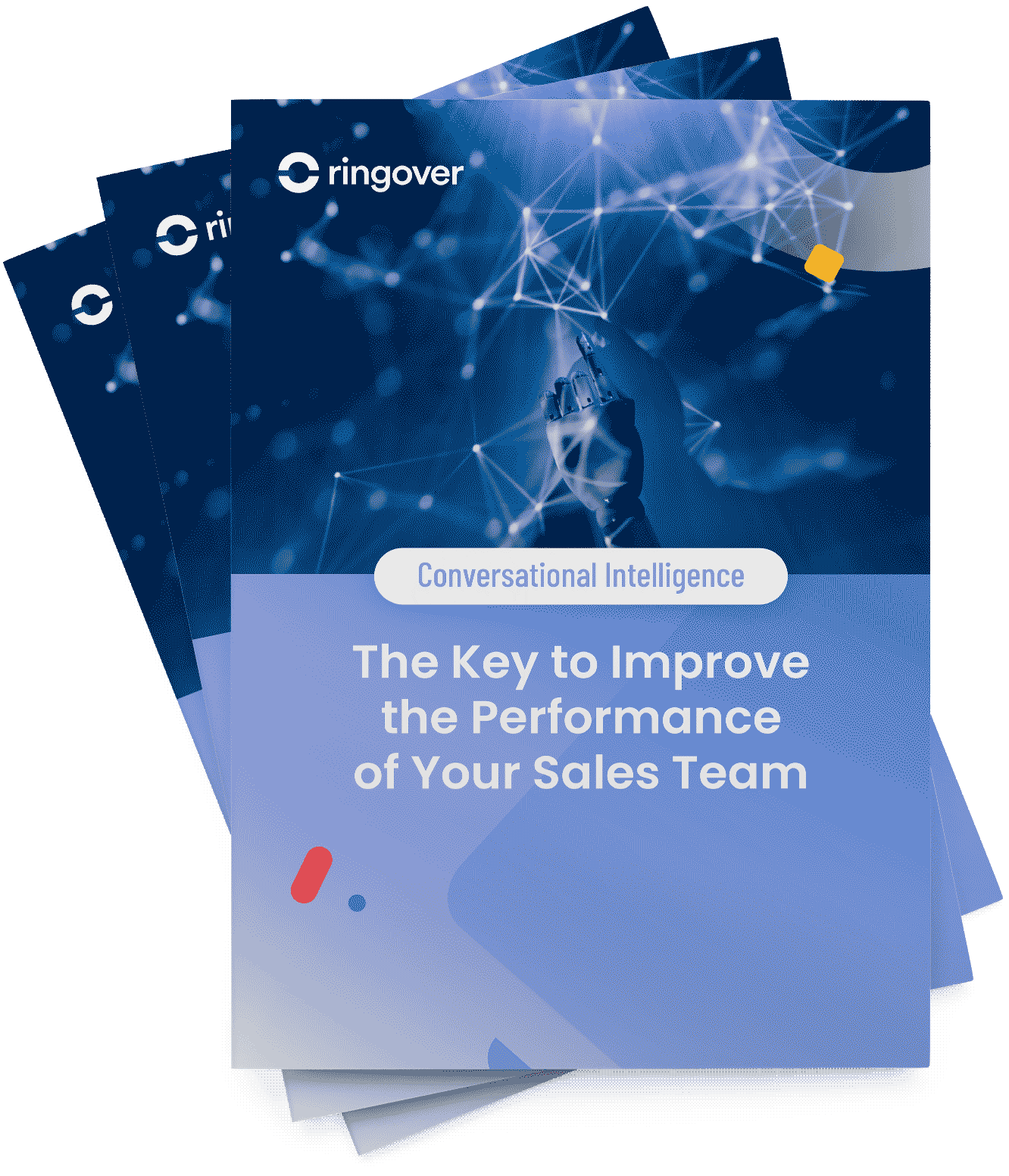Summary
- What Is Workflow Automation?
- How Does Workflow Automation Work?
- What Are the Benefits of Workflow Automation?
- Best Practices for Workflow Automation
- Essential Workflow Automation Tools
- How to Measure the ROI of Workflow Automation
- Examples of Workflows to Automate
- Workflow Automation: A Lever for Agility and Sustainable Growth
- Workflow Automation FAQ
- Citations
Businesses are constantly looking for ways to streamline their operations. Workflow automation has emerged as a concrete solution to this need: it transforms repetitive processes into intelligent sequences that run automatically, without manual intervention [1].
As a result, teams are freed from time-consuming tasks, execution becomes more consistent, and–most importantly–the organisation gains in day-to-day efficiency.
Beyond simply saving time, workflow automation paves the way for a new way of working together.
By connecting different tools and departments, it reduces friction and ensures more reliable tracking of activities.
In the following sections, we'll explore what workflow automation really is, its concrete benefits, best practices for implementing it, and the essential tools that make successful deployment possible.
What Is Workflow Automation?
Definition 📖
A workflow refers to the series of steps required to complete a task or business process–whether it's approving a purchase request, handling a customer complaint, or qualifying a lead.
Traditionally, these steps involve several people, often spread across different departments, with manual validations that slow down the entire process.
Workflow automation, on the other hand, means assigning a software system the task of executing, coordinating, and monitoring these sequences of actions according to predefined rules.
In other words, instead of an employee sending reminders by email, transferring files, or updating a database, a system automatically orchestrates these actions.
Behind this approach, the goal is clear: eliminate friction, reduce human error, and ensure every step flows smoothly and is properly documented.
How Does Workflow Automation Work?
Workflow automation operates on three main pillars:
1. Process Modelling
Before any automation can happen, the existing workflow must be mapped: who does what, when, and with which tools.
This formalisation step helps identify repetitive tasks, bottlenecks, and interdepartmental dependencies.
2. Defining Rules and Triggers
An automated workflow is built on precise conditions [2]. For example: If a customer submits a support ticket, then the system automatically assigns it to the most qualified available agent.
These rules can be based on data (CRM, ERP, online forms) or on events (a click, an e-signature, a validated payment, etc.).
3. Real-Time Execution and Monitoring
Once configured, the software takes charge of executing the tasks.
Employees remain in control through a dashboard that gives them visibility into progress, potential delays, or bottlenecks.
Some tools even include analytical reports to measure the process's performance.
What Are the Benefits of Workflow Automation?
Workflow automation represents a true transformation in how companies organise their activities. Its benefits span several levels–operational, human, and strategic. Let's explore the main advantages it offers.
1. Time Savings and Greater Efficiency
By eliminating repetitive manual tasks (such as sending follow-up emails, updating databases, or validating forms), automation frees up valuable time.
Employees can then focus their energy on strategic and creative work.
Nearly 60% of jobs involve at least 30% of tasks that can be automated, highlighting the immense potential of automation to reduce wasted time [3].
2. Reduced Human Error
Manual data entry or passing information between teams inevitably leads to mistakes.
With properly configured rules, the system executes actions consistently, drastically reducing oversights and inconsistencies.
3. Better Collaboration and Smoother Processes
An automated workflow acts as a common thread linking different departments. Information circulates faster, and responsibilities are clearly defined. The result: fewer misunderstandings, fewer delays, and stronger coordination between teams.
4. Real-Time Tracking and Transparency
Thanks to the dashboards built into automation tools, managers gain instant visibility into task progress.
This makes it easier to detect bottlenecks, evaluate performance, and make data-driven decisions.
5. Improved Customer Experience
When internal processes run smoothly, customers feel the difference directly–shorter turnaround times, faster responses, and greater consistency in communication.
In fact, 82% of consumers expect companies to be both responsive and proactive in their interactions–an achievable goal through automation [4].
6. Scalability and Adaptability
Automation scales with growth. Whether handling ten requests a day or a thousand, automated workflows adjust seamlessly without requiring extra human resources. This flexibility makes them a strategic ally for expanding businesses.
Automate your sales process with the help of Ringover and Empower by Ringover, a powerful business phone system and conversational AI tool.
Best Practices for Workflow Automation
To achieve sustainable results, automation must follow a thoughtful, structured approach tailored to the company's reality. Here are some best practices to guide you.
| Best Practice | Goal | Example/Insight |
|---|---|---|
| Map out processes | Identify unnecessary steps and bottlenecks | Avoid automating inefficiency |
| Prioritise strategic workflows | Target repetitive, high-impact tasks | Document validation, ticket management |
| Involve teams | Encourage adoption and reduce resistance | Co-design workshops for workflows |
| Ensure integration with existing tools | Build a smooth, connected ecosystem | CRM + customer support + messaging |
| Define clear KPIs | Measure effectiveness and adjust workflows | Processing time, error rate, ROI |
| Continuously improve | Adapt workflows to evolving business needs | Pilot tests, regular updates |
1. Map and Analyse Existing Processes
Before any automation, it's crucial to understand in detail how the current process works.
This mapping step helps:
- Identify redundancies,
- Spot bottlenecks,
- Detect low-value steps.
A clear preliminary analysis prevents automating inefficiencies.
2. Prioritise Strategic Workflows
Not all processes are equal. Some are too complex or too variable to automate immediately.
The ideal starting point is with highly repetitive, high-impact tasks: document approval, lead tracking, customer ticket management, and so on. Organisations that prioritise automation initiatives based on business value see twice the return on investment [5].
3. Involve Teams from the Start
Automation can cause concern if perceived as “human replacement.” That's why it's essential to involve employees from the design phase–gather their input, listen to their feedback, and clarify that automation is meant to support, not replace, their work.
4. Focus on Integration with Business Tools
An automated workflow is only as valuable as its ability to fit seamlessly into the company's existing software ecosystem–CRM, ERP, messaging tools, business phone system, and customer support solutions.
This interconnection ensures data continuity, breaks down silos, and facilitates collaboration between departments.
Numerous studies highlight the importance of integration. According to Salesforce, only 28% of enterprise applications are interconnected, and 95% of CIOs believe integration issues are a major barrier to AI adoption [6].
This demonstrates how crucial it is to view automation not as an isolated project but as a complementary component of the company's entire information system.
In practice, this means:
- Connecting CRM software with prospecting and billing tools,
- Linking a customer support system to internal messaging for faster ticket resolution,
- Integrating a VoIP phone with customer databases to personalise greetings and reduce handling times.
5. Define Clear Performance Indicators
Implementing an automated workflow without measurement is like flying a plane without a dashboard.
You should define KPIs from the start, such as:
- Average processing time,
- Error rate,
- Customer satisfaction,
- Cost savings achieved.
These indicators help fine-tune and optimise workflows over time.
6. Test, Adjust, and Continuously Improve
A workflow is never static. Needs evolve, teams change, and tools improve. It's therefore recommended to proceed iteratively: test on a small scale, collect feedback, and expand gradually.
Essential Workflow Automation Tools
The automation market is vast and constantly evolving.
To avoid getting lost in this technological jungle, it's helpful to focus on a few essential platforms that cover different needs–from simple task automation to managing complex enterprise-level processes.
1. Zapier: Automation for Everyone

Zapier is probably the most well-known tool for easily connecting applications together.
Using its system of “Zaps,” it triggers automatic actions when a specific event occurs (for example: when a lead fills out a form, the data is sent to the CRM and a welcome email is sent).
- Strengths: Easy to use, extensive integration library (over 6,000 apps).
- Use Case: Automate data transfers between forms, CRM systems, and marketing tools–all without coding.
2. Make: Visual Flexibility

Make stands out for its intuitive visual interface that lets users build automation workflows as visual “scenarios.”
It offers granular rule configuration and can handle complex multi-step workflows, often more advanced than those possible in Zapier.
- Strengths: Visual scenarios, high flexibility, strong value for money.
- Use Case: Manage multi-step processes such as lead qualification, syncing data across multiple databases, and sending internal notifications.
3. Microsoft Power Automate: For Microsoft Environments

Designed primarily for companies already using the Microsoft 365 suite, Power Automate enables seamless connections between Outlook, Teams, SharePoint, Dynamics 365, and many other Microsoft solutions. It also includes Robotic Process Automation (RPA) capabilities, ideal for automating repetitive office tasks.
- Strengths: Smooth integration within the Microsoft ecosystem; advanced RPA features.
- Use Case: Automate document management in SharePoint, trigger Teams alerts when a file is updated, or automatically extract data from forms.
4. ServiceNow: Automation for IT and Support

ServiceNow is a robust platform widely adopted by large enterprises to automate ITSM (IT Service Management) processes as well as HR, finance, and customer service workflows.
It centralises requests, orchestrates workflows, and generates detailed tracking reports.
- Strengths: Power, scalability, and a strong focus on IT and customer support.
- Use Case: Automated ticket management, incident tracking, and employee onboarding.
5. UiPath: The RPA Specialist

UiPath is one of the global leaders in Robotic Process Automation (RPA). Its strength lies in automating repetitive tasks performed in software systems without APIs by “mimicking” human actions such as clicks, typing, and navigation.
- Strengths: Automates complex processes on legacy or closed systems.
- Use Case: Data entry in ERPs, automatic extraction of information from invoices or PDFs, and automation of banking operations.
How to Measure the ROI of Workflow Automation
Implementing workflow automation represents an investment–both financially and in terms of deployment time.
To demonstrate its value and secure buy-in from management and teams, it's essential to accurately measure Return on Investment (ROI).
1. Identify the Right Metrics
ROI isn't just a single number–it's built from multiple indicators tailored to your organisation:
- Time Savings: Reduced average processing time per task or case.
- Cost Reduction: Lower expenses related to labour, errors, or delays.
- Service Quality: Improved customer satisfaction and fewer complaints.
- Team Engagement: More time freed for higher-value tasks.
2. Establish a Baseline Before Automation
To measure real impact, you need reference data. For example: how long did it take to process an invoice before automation? What was the error rate in manual data entry?
This baseline serves as a benchmark for evaluating gains after deployment.
3. Track Progress Over Time
ROI isn't static. The benefits of automation accumulate over time–thanks to organisational learning and continuous workflow refinement.
It's important to measure results regularly: monthly, quarterly, or annually depending on project maturity.
4. Account for Qualitative Benefits
Some outcomes are harder to quantify but just as strategic: smoother collaboration, reduced stress from repetitive tasks, and an enhanced employee experience.
These intangible benefits contribute significantly to overall performance improvement.
5. Calculate Financial ROI
The standard formula is:
ROI = (Net benefits generated by automation / Total project costs) × 100
Costs include software purchase or subscription, training time, maintenance, and change management.
Benefits include increased productivity, reduced errors, and cost savings achieved.
Examples of Workflows to Automate
Workflow automation isn't limited to a single business function–it applies across multiple domains and can transform both customer interactions and internal operations.
Here are some practical examples to illustrate its potential.
Example: Workflow Automation for Self-Service (Self-Care)
Self-service workflow automation allows users and customers to manage their requests independently, without direct human intervention.
For example, a self-service portal can automate tasks such as:
- Password resets,
- Sending confirmation emails,
- Scheduling appointments.
These automated workflows simplify the handling of frequent requests, reduce the workload of customer service teams, and speed up resolution for the end user.
Additionally, AI chatbot solutions can instantly answer common questions, improving both efficiency and user experience.
With an AI assistant like Ringover's, you can:
- Redirect users to an intelligent FAQ,
- Offer step-by-step tutorials,
- Guide customers or automatically open a ticket if the issue exceeds its scope,
- Ensure a seamless transfer to a human agent when the request becomes complex–without interrupting the customer experience.
Example of Workflow Automation for Sales Closing
In the final phase of the sales cycle, every detail matters. Automation can accelerate and secure the closing process by:
- Automatically generating quotes and contracts directly from the CRM,
- Triggering an electronic signature request as soon as the client approves,
- Sending real-time notifications to the sales team and management.
This type of workflow reduces the risk of oversight, speeds up sales closing, and reinforces a professional image with clients.
Example of Automation in Recruitment
Recruitment involves many repetitive, time-consuming tasks such as sorting résumés, sending emails, and scheduling interviews. Automation helps by:
- Automatically filtering applications based on predefined criteria,
- Sending personalised acknowledgement emails,
- Offering interview time slots via a shared calendar,
- Centralising all candidate information in an ATS (Applicant Tracking System).
👉 Result: A faster, more transparent recruitment process for candidates and far less administrative burden for HR teams.
Workflow Automation: A Lever for Agility and Sustainable Growth
Workflow automation is more than a technological evolution–it represents a true shift in how organisations manage their operations.
By streamlining processes, it reduces manual tasks, increases productivity, and improves both the customer experience and employee engagement.
As we've seen, the benefits are numerous: time savings, fewer errors, better collaboration, real-time visibility, and scalability as the company grows.
However, to fully reap these benefits, it's essential to adopt a structured approach–mapping processes, defining clear priorities, involving teams, and continuously measuring outcomes.
The tools available today–from accessible solutions like Zapier and Make to more advanced platforms such as UiPath or ServiceNow–enable every organisation, regardless of size, to embrace this transformation.
The key is to choose the solution that best fits your company's needs and software environment.
In this context, Ringover's integrations perfectly illustrate the potential of automation. Its AI assistant can handle up to 80% of routine requests, provide 24/7 support, seamlessly transfer complex cases to human agents, and, in some cases, generate up to 26% of monthly revenue.
Combined with Ringover's CRM integrations and communication tools, this type of automation transforms the customer experience while significantly easing the workload of support and sales teams.
Ultimately, workflow automation is not an end in itself but a means–a way to free up time for innovation, enhance the value of human interactions, and build a more agile organisation ready to meet tomorrow's challenges.
Start automating your workflows today to transform your operations and achieve long-term efficiency.
Workflow Automation FAQ
What is an automated workflow?
An automated workflow is a sequence of actions executed automatically according to predefined rules.
In practice, this means that software performs certain steps in a business process without requiring an employee to intervene each time.
For example: when a prospect fills out an online form, their contact is automatically added to the CRM, a welcome email is sent, and a follow-up task is created for the sales team.
Which workflows should be automated first?
It's best to start with repetitive, standardised, and time-consuming processes that deliver visible, quick results.
Some common examples include:
- Handling customer requests (tickets, emails, forms),
- Managing sales leads,
- Approving documents or leave requests,
- Updating databases.
These “quick wins” help demonstrate the value of automation before expanding to more complex workflows.
What are the most common automation mistakes?
Three pitfalls frequently arise in automation projects:
- Automating without mapping: Deploying a tool without first analysing the existing process risks automating inefficiencies.
- Trying to automate everything at once: This unnecessarily complicates the project and delays deployment. It's better to proceed step by step.
- Neglecting team involvement: Automation can raise concerns. Adoption is much higher when employees are involved from the beginning and understand the tool's added value.
Citations
- [1]https://www.atlassian.com/agile/project-management/workflow-automation
- [2]https://www.zendesk.fr/blog/workflow-automation
- [3]https://www.mckinsey.com
- [4]https://www.salesforce.com/news/stories/customer-engagement-research/
- [5]https://www.gartner.com/en/doc/state-of-io-automation-5-survey-insights
- [6]https://www.salesforce.com/news/stories/connectivity-report-announcement-2024/
- [7]https://www.ringover.com/ai-assistant
Published on November 7, 2025.


